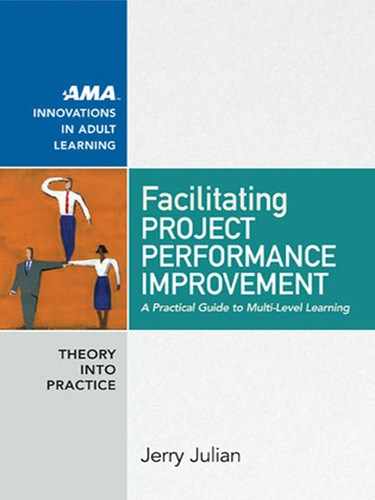The Need for Multi-Level Learning 17
American Management Association
www.amanet.org
saving the organization time and money while preventing future losses
and dissatis ed customers.
The bad news is that the company was unable to prevent the problems
before the losses accrued, despite the existence of a regular project review
process by the PMO. The net result is that it cost millions for the company
to learn a hard lesson. And it doesn’t have to be that way.
RED-LIGHT LEARNING
When project organizations do not have e ective mechanisms for learning,
it remains largely informal and incidental, embedded in the everyday work
routines of organizational members and happening largely unconsciously
(Marsick & Watkins, 2001). Improvement, innovation, and problem solv-
ing are often left to chance. Issues may go unaddressed or avoided, creat-
ing abrupt surprises, blowups, or “ re drills” that trigger a red light on the
“tra c light” reporting system for project status (Julian, 2008a). In these
situations, project teams are hastily assembled so that senior managers can
nd out what went wrong; this creates an environment riven by political
in ghting, threats to individuals’ jobs and career prospects, “blamestorm-
ing,” and avoidance of the “truth” for fear of reprisals by managers or
peers. The result is that people at all levels actively avoid re ection, largely
because it is perceived as being too threatening, political, ine ective, or all
of the above. This creates a self- reinforcing cycle, because when structured
re ection is avoided, the result is further opportunities for blowups and
surprises. This “red- light learning cycle” is depicted in Figure 1.1.
When people and teams are thrust into these red- light learning situa-
tions, both the people involved and the organization lose. There are several
reasons why red- light learning can be harmful to long- term performance.
First, under these conditions, the underlying root causes of problems may
never be discovered or adequately addressed. Peers will hesitate to speak
about one another’s performance for fear of throwing their colleagues
“under the bus” in the presence of managers. Channels of communica-
tion become blocked, muted, or distorted, and the analysis that does occur
often winds up being directed at outside parties, such as vendors or other
departments. This means that the true root causes may never be found,
leaving the problems unsolved.

18 Foundations
American Management Association
www.amanet.org
Second, under red- light learning conditions, a team’s potential to reach
high levels of performance and collaboration can be severely diminished.
The need to “search for the guilty” can often create animosity, con ict,
or communication barriers that persist into the future, inhibiting organi-
zational e ectiveness. And regardless of economic conditions, the most
talented individuals may either “check out” or leave altogether. This may
not be the kind of place you or your best people want to work.
The third reason that red- light learning is detrimental to project or-
ganizations is related to how people perceive the process of “learning.”
The fallout from red- light learning in the form of animosity, distrust, and
unresolved con ict can mean that project team members may avoid in-
volvement with future “lessons- learned” sessions altogether, knowing not
only that these sessions can strain relations with colleagues, but that the
real root causes may not be adequately addressed. What this adds up to is
Avoidance
䡲
“No Time” for Structured
Reflection
䡲
Avoid Collective Learning
䡲
Over-Reliance on Project
Reviews
䡲
“Project Amnesia”
“Blowups”
䡲
Surprises
䡲
Failures
䡲
Runaway Projects
䡲
Wasted Investment
䡲
Rework
Risk
䡲
Buried Issues
䡲
Unresolved Conflict
䡲
Recurring Problems
“Red-Light Learning”
䡲
What Went Wrong and Who’s to Blame
䡲
Mistrust and Career Threats
䡲
Defensive Routines and Face-Saving
FIGURE 1.1
The Red-Light Learning Cycle
..................Content has been hidden....................
You can't read the all page of ebook, please click here login for view all page.
